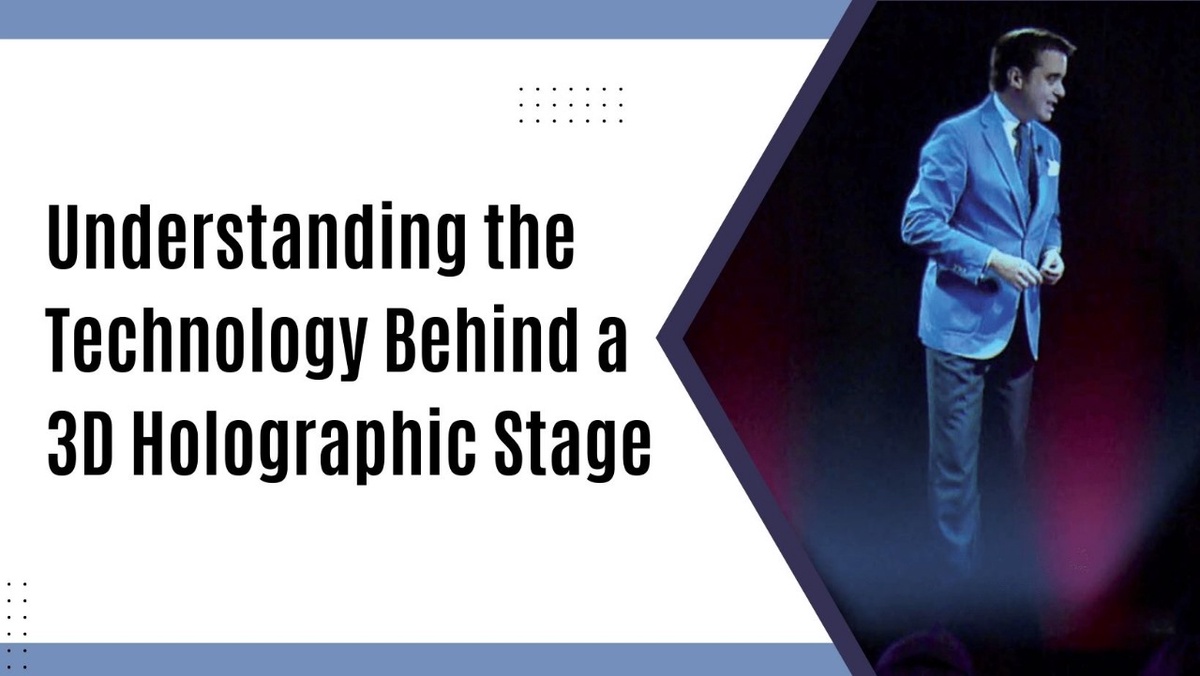In recent years, 3D holographic stages have become an attractive element of live performances, presentations, and events. These stages create mesmerizing illusions that seem to resist the boundaries of reality. But how do they work? Let's peel back the layers of this enigmatic technology and uncover the secrets behind the scenes. In this article, we provide you with every detail about a holographic stage and enigma technology role.
What is a 3D Holographic Stage?
A 3D holographic stage is a platform equipped with advanced technology to project three-dimensional holographic images. Unlike traditional flat screens, holographic stages give the illusion of depth, allowing viewers to perceive images as if they exist in physical space.
How Does It Work?
- Projection Technology
At the heart of a 3D holographic stage lies sophisticated projection technology. Multiple high-resolution professional hologram projectors are strategically positioned around the stage to cast images onto a specialized screen or surface. These projectors synchronize their output to create a seamless visual experience.
- Holographic Display Material
The screen material used in holographic stages plays a crucial role in image quality and realism. It is engineered to scatter light in a controlled manner, creating the illusion of three-dimensional objects. This material often includes a combination of reflective and refractive elements to enhance the holographic effect.
- Content Creation
Creating content for a 3D holographic stage requires careful consideration of perspective and depth. Artists and designers utilize specialized software to craft holographic visuals that align with the stage's dimensions and viewing angles. These visuals can range from lifelike characters to abstract shapes, depending on the intended aesthetic.
- Audience Perspective
From the audience's perspective, the magic of a 3D holographic stage unfolds as they witness seemingly tangible objects materialize before their eyes. Through clever manipulation of light and shadow, the stage creates the illusion of depth, allowing viewers to perceive images from various angles.
Features of 3D Holographic Stages
- Immersive Experience - Holographic stages provide a captivating, immersive environment for performers and audiences.
- 3D Projection - Utilizing holographic technology, stages project lifelike 3D images and visuals.
- Interactivity - Interactive elements enable real-time engagement between performers and holographic projections.
- Dynamic Effects - Holographic stages offer dynamic special effects, enhancing the overall visual spectacle.
- Versatility - These holographic stages can accommodate various types of performances, from concerts to theatrical productions.
- Creative Possibilities - Holographic stages unlock endless creative possibilities, allowing for innovative storytelling and presentation.
- Integration - Seamless integration with lighting, sound, and other production elements enhances the overall experience.
- Scalability - Stages can be scaled to fit different venues and audience sizes.
Applications of 3D Holographic Stages
- Entertainment Industry
In the sphere of entertainment, professional hologram projectors have revolutionized live performances. Musicians, comedians, and other performers leverage this technology to enhance their acts with visually stunning effects. From virtual band members to immersive backdrops, holographic stages add an extra dimension to the audience experience.
- Corporate Events
In the corporate world, 3D holographic stages are employed to captivate audiences during product launches, conferences, and trade shows. Brands leverage this technology to showcase their products dynamically and memorably. Holographic presentations leave a lasting impression on attendees, setting the stage for impactful marketing campaigns.
- Education and Training
Educators utilize 3D holographic stages to engage students in immersive learning experiences. Subjects such as anatomy, astronomy, and history come to life through interactive holographic displays. By visualizing complex concepts in three dimensions, educators foster deeper understanding and retention among learners.
Future Prospects
As technology continues to evolve, so too will the capabilities of 3D holographic stages. Advancements in projection technology, screen materials, and content creation tools will push the boundaries of what's possible. We can expect to see even more lifelike holographic images and immersive experiences in the years to come.
Conclusion
So, 3D holographic stages represent a convergence of art and technology, captivating audiences with their mesmerizing illusions. Through a combination of sophisticated projection technology, specialized screen materials, and creative content creation, these stages create immersive experiences that transcend the boundaries of traditional media. As technology continues to evolve, we can look forward to even more breathtaking applications in entertainment, education, and beyond. So, the next time you find yourself spellbound by a holographic performance, take a moment to appreciate the intricate technology that brings it to life. For more information bout holographic displays, connect with Vision3D customer service number - +91-8971953451.


No comments yet